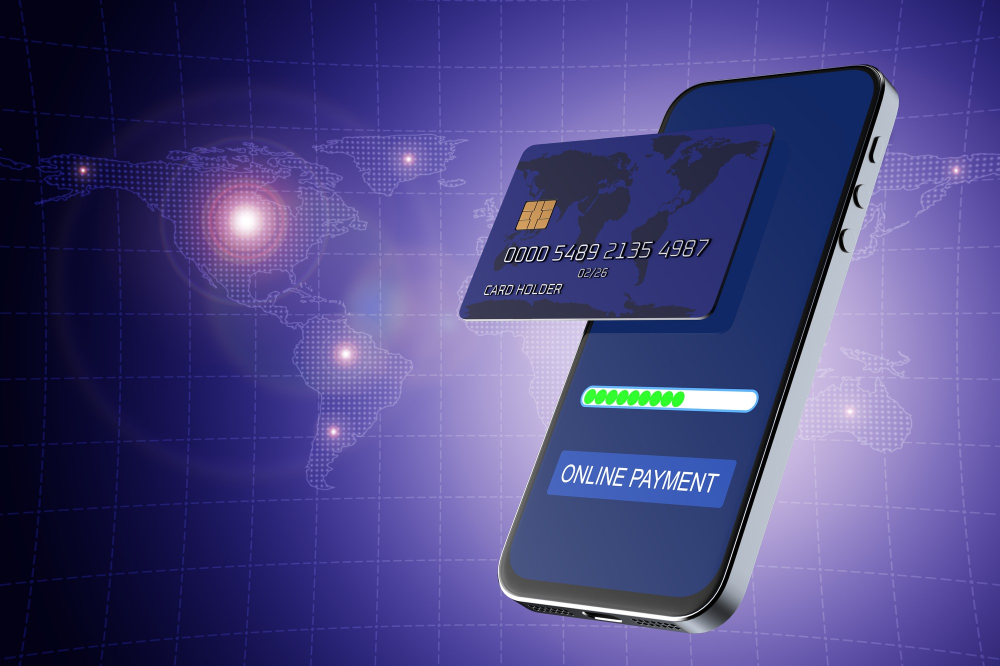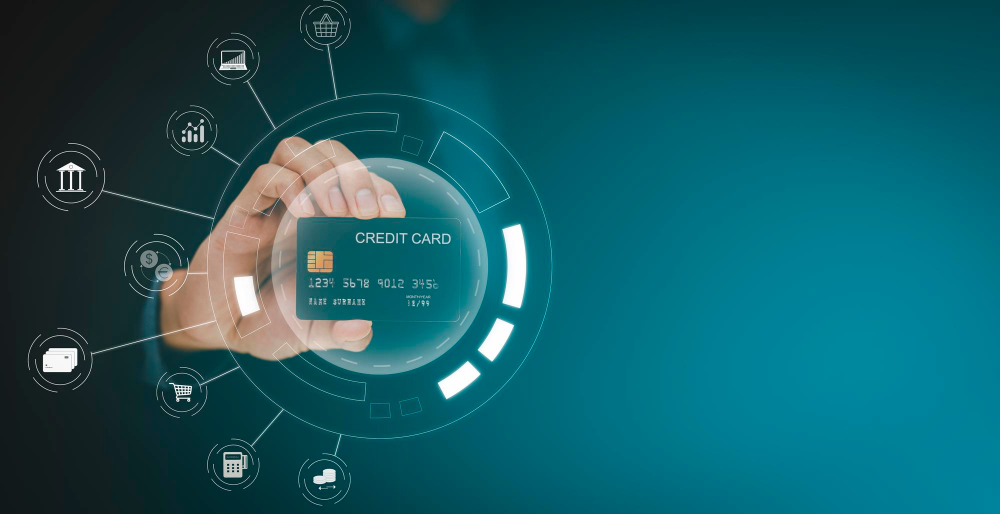Digital transactions are omnipresent these days. Everywhere we look, people are paying for goods and services with their debit/credit cards, smartphones, watches, rings, and even their eyes. But it’s not that simple.
As digital payment technology continues to evolve, so do the potential threats to sensitive customer data and the challenges for eCommerce merchants. Storing customer payment data is a sensitive process that must be protected from external threats. That is why businesses must protect the credit card data they store, improve its security, and prevent credit card fraud.
This article will discuss credit card tokenization, how it works, and its benefits and risks.

Tokenization is the process of replacing sensitive data with non-sensitive data. The concept quickly caught on in the financial services industry, and payment providers began using it to protect card PANs by replacing them with random strings of characters.
These unique strings generate secure identifiers from PANs, and payment tokens are created as a result of these operations. Payment tokens are automatically issued in real time, making them convenient to use in predefined payment environments. What’s more, they can be merchant-specific. This type of token is widely used in eCommerce, third-party payment processes, and other applications.
A card’s PAN is replaced with a payment token for all tokenized payment transactions. The PAN itself is hidden during transactions, making such payments more secure. As a result, payment tokenization is a valuable security measure used by many companies in a variety of industries. The PAN is always protected, so there is little chance that the token can be used by bad actors. Even if hackers gain access to payment tokens, they’re completely worthless because they’re almost impossible to decrypt.
Credit card tokenization begins as a typical credit card transaction. The process is the same until the credit card information is submitted at checkout.
In some cases, users want to store their cards for future use. Tokenization makes this possible, but it can also be used for other purposes. For example, card tokenization is typically used when someone signs up for a free trial of an online service. In these cases, customers enter their credit card information when they sign up and create payment tokens that can be billed later. There is also an initial $0 transaction that verifies the request. Behind the scenes, the payment processor contacts the emitter to make sure the card is valid.
The card cannot be tokenized until the processor confirms its validity. The payment token generated is a number associated with that specific credit card. The company responsible for tokenizing the credit cards knows which token number is associated with which card.
An application or digital wallet doesn’t store credit cards. Instead, it stores payment tokens. Each time the card is charged in the future, it is the token number that is associated with the card. Therefore, the merchant stores credit card numbers without storing sensitive information on their system.

Although tokenization relies on the same general principle as encryption, there are some distinct differences between the two. Encrypted data can be decrypted or reverted to its original form. Basically, encryption is reversible, while tokenization is not.
Irreversible tokens are not associated with the original data source. It is impossible to mathematically switch back the token value to get the original data string. For this reason, many people consider these tokens to be the only true type of token.
On the contrary, point-to-point encryption always maintains a mathematical relationship to the original data source. That’s why any encryption method is only as strong as the difficulty of its algorithm. In theory, a hacker can break the algorithm and then decipher all the encrypted values. In addition, encryption keys need a place to be stored, which makes them sensitive to external threats, especially in large systems with many participants.
Both encryption and tokenization are widely used in the digital world. Still, encryption remains the preferred method for transferring sensitive data. Tokenization, on the other hand, provides additional security because it can’t be exploited by computer algorithms or mathematical formulas. Therefore, tokenized payment card data remains secure even if stolen for as long as the data storage remains protected. This is why organizations that handle payment card data choose tokenization.
In some cases, you may need to tokenize a credit card from an order that was previously processed. Let’s study an example.
First, you bill the customer $100 for their first month of service. At this point, this is a normal eCommerce transaction, and the customer checks out as usual. The customer submits their credit card information during the checkout.
Second, the credit card service provider will process the transaction as normal. The processor sends an approval message with an authorization code and the customer receipt.
Finally, you can tokenize this data even though it was processed as a normal order. You need to ask the payment processor to tokenize the card associated with the returned authorization code. You can also define a token number to simplify further interaction; let’s say token #75.
When you submit a transaction, you can reference token #75. The payment processor will then charge the credit card associated with the token for future transactions.

Let’s take a look at what happens when a credit card is tokenized during a transaction.
Step 1. The customer visits an eCommerce merchant’s website or application and signs up for a service or product. Then, they enter their personal information, such as their credit card number, expiration date, and CVV number.
Step 2. The card details are verified to prove their validity. A payment processor authorizes an initial transaction from the card to confirm its credibility.
Step 3. The customer needs to secure their card. They have to select either “Secure your card according to RBI guidelines” or “Tokenize your card according to RBI guidelines.”
Step 4. The customer approves token creation.
Step 5. The token is created and stored in the merchant’s database. The token is used in all future transactions when that credit card is presented.
Step 6. The last four digits of your saved card will be displayed when you return to the same website or application, so you can easily recognize your card when making purchases. Tokenization is complete.
EMV technology stands for EuroPay, Mastercard, and Visa. It is not the same as tokenization, as this technology relates to a customer’s physical credit card.
However, there are some similarities. For example, both EMV and tokenization hide customer data during transactions to protect it. Likewise, EMV holds sensitive payment information directly on the microprocessor chip that encrypts the digital signature needed during a transaction.
The EMV chips embedded in today’s credit cards rely on the same general principle. The chips generate a unique, one-off code for each purchase. Unlike tokenization, EMV is used only for in-person transactions and requires both an EMV-enabled card and an EMV-compatible terminal to read the EMV chip placed on the card.
Chip-and-PIN transactions rely on customers dipping their cards into an EMV terminal to process their payments. Currently, banks are issuing credit and debit cards with Near Field Communication (NFC) technology. NFC enables contactless payments made by tapping the card near an NFC-compatible card reader or terminal.
This is the same technology that powers Apple Pay, Google Pay, and similar services. These digital wallets use tokenization and don’t actually store your cards. Instead, they store tokens linked to your card information.

When a credit card is tokenized, the original card is extracted from any database and securely stored outside of it. A placeholder token, which is randomly generated data, replaces the personal card information and protects the customer.
Replacing the primary account number (PAN) or other sensitive credit card data with a token eliminates the need to store customer card information in internal systems. From then on, credit card data can be sent securely to any database.
Let’s dive deeper into the different forms of tokenization.
eCommerce payment tokenization
As web stores and online shopping are becoming more prevalent in the retail market, implementing secure payments is a top priority for businesses and card issuers. Personal banking information is the number one target for hackers and fraudsters. Therefore, online merchants must deliver PCI-compliant transactions.
When making an online purchase, the user’s card number is converted to a random combination of characters. The link to the actual credit card and its relationship to the token is kept in a separate data store.
For monthly subscriptions, other recurring transactions, and refunds, the merchant can use the token instead of storing personal information.
Mobile payment tokenization
Enterprises can use tokenization to protect payment method information received from users’ mobile applications. Mobile APIs work efficiently on native Android and iOS apps and support web-based applications. With mobile API tokenization, cardholders can safely store sensitive data and repeat online purchases.
Apple Pay or Google Pay users don’t store their credit cards in their digital wallets. Instead, their wallets store tokenized card numbers that are used every time the user makes a purchase.
App payment tokenization
Mobile shopping is dominating the retail market, so almost every company offers an online shopping experience to its customers. Shoppers tend to choose a simple payment process that involves fewer steps to complete a purchase. This makes payment methods such as shopping apps an attractive option.
Shopping applications interact directly with mobile wallets to avoid the need to manually enter card numbers and other details. This streamlines the payment process and maintains a high level of payment security. Such payment gateway tokenization protects credit card information from malicious entities and attacks.
Call centers
Call centers handle sensitive customer data and accept payments over the phone. They use interactive voice response (IVR), point-to-point encryption (P2PE), and dual-tone multifrequency (DTMF) technologies to capture payment card information. Debit and credit card tokenization service providers integrate with these technologies to protect sensitive data and remove personal card information from payment networks and call center systems.

As data breaches continue to occur, the need to protect digital assets from external threats remains critical. This has led to the implementation of tokenization, encryption, and other security methods.
Integrating tokenization into credit card processing allows businesses and customers to protect their tokens by giving hackers only unusable tokens. This makes bad actors go elsewhere to look for valuable digital assets like credit card numbers and social security numbers.
You can combine encryption and tokenization to improve credit card processing and data security.
Encryption plays an integral role in credit card processing, where data is transferred across digital networks. Encryption provides both digital connection and translation across two or more ecosystems because tokens exist and operate only within their specific environments.
Increased security
First and foremost, credit card tokenization increases payment security and protects sensitive customer information from hackers, human error, and system failures. Tokens are randomly generated and can only be read by the payment processor. Even if fraudsters steal the tokens, they can’t monetize them. In this way, the systems prevent bad actors from committing cybercrime or reselling stolen information.
PCI DSS compliance
Enterprises that collect and store sensitive data on their networks must comply with PCI DSS standards. Tokenization helps organizations meet these standards with minimal security expenses. With tokenization, customer card information is removed, reducing the risk of data leakage. As a result, merchants don’t have to invest much in data protection because credit card tokenization covers it all. Addresses, files, passwords, and other sensitive customer data can also be protected with tokenization.
Reduced false declines
Online merchants typically work with a variety of refund requests. Some are the result of fraudulent sales, while others are the result of false declines due to strict fraud filtering rules. When merchants use tokenized credit card processing, they rely on tokens instead of account numbers. Therefore, fraud filters have fewer elements to check, resulting in fewer false declines.
Enhanced cardholder loyalty
Visa Token Service (VTS), Mastercard Digital Enablement Service (MDES), and other card network token systems support simplified checkout for regular customers. For merchants, this improves cardholder retention and reduces attrition.
Increased flexibility
Credit card tokenization increases flexibility by allowing customers to choose from a variety of payment options, such as online payments, mobile app payments, and others. What’s more, payment tokenization standardizes, streamlines, and protects card transactions.
Enable one-click payments and safe recurring billing
You can streamline the shopping experience by allowing customers to store their payment information on your website through an account or recurring payment plans. Tokenization is a secure way to store your customers’ digital payments and credit cards.
Improving the customer experience
When customers know you’ll keep their information protected, they’re more likely to shop with you again in the future. Token service providers typically use an open API that interacts directly with your preferred payment system. This allows them to offer a wide variety of payment services.

Like anything else, tokenization carries certain risks, depending on the type and format. Let’s examine them.
With cross-domain tokenization, enterprises tokenize data for all of their customers in a single data store. A token for one vendor can later be used by any other vendor in that store. If the vendor uses format-preserving tokens, the data is more likely to be decrypted in the case of a data breach.
There are also different approaches to tokenizing data. For example, some enterprises continue to store both card data and tokens on their servers, which is referred to as phased tokenization. In some cases, this can be a problem because this approach makes it difficult to determine a token and a payment card number. In addition, compliance is sometimes difficult to achieve because the PCI DSS standard requires vendors to demonstrate that they don’t have access to payment card data.
At the same time, other companies use multiple tokenization solutions, which can create challenges for card processing. For example, the vendor is likely to use the wrong token to process a transaction if there are tokens from multiple service providers and no business logic about which tokens can be used with different service providers. In other words, the vendor will use a token from one company to process a transaction through another company.
Although payment tokenization carries some risks, the situation is changing for the better thanks to new payment tokenization algorithms and methods and credit card tokenization standards.
In summary, payment tokenization makes it easy for businesses of all sizes to protect their customers’ sensitive credit card data without investing a lot of time, money, and effort into security systems. Because businesses don’t store the actual payment information on their end, the risk of a data breach is minimal, and the protection of customer credit card information is high.
In addition, tokenization allows merchants to accept payments in a variety of ways, such as one-click transactions and recurring payments. These methods are much less risky when sensitive credit card information is tokenized. This also creates more convenient shopping journeys and improves the overall shopping experience.
As a result, credit card tokenization will be in the spotlight in the future, as tokenized payments set new standards for merchants and consumers.